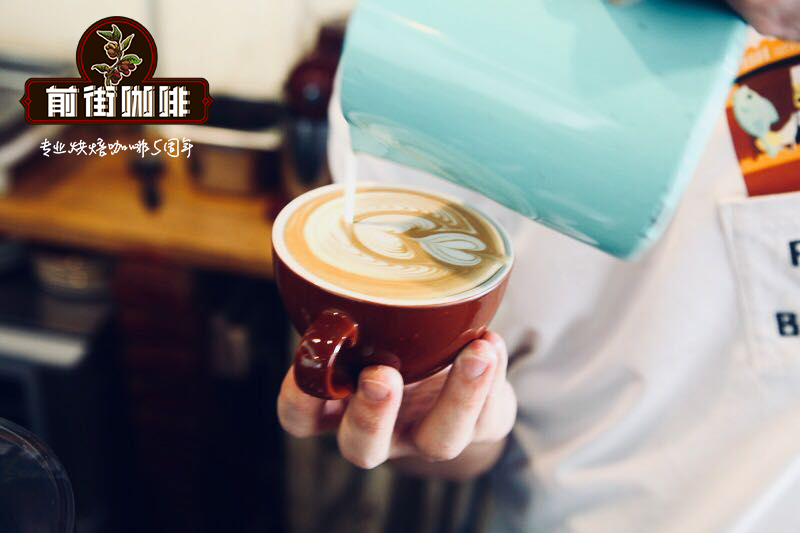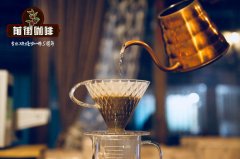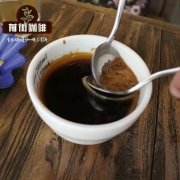Do you grow coffee in India? What is the flavor and taste of Malaba coffee, a monsoon unique to India?

Professional coffee knowledge exchange more coffee bean information please follow the coffee workshop (Wechat official account cafe_style)
Do you grow coffee in India? What is the flavor and taste of Malaba coffee, a monsoon unique to India?
There are several reasons why Indian coffee is popular with all coffee hobbies, but the most important is a process used in coffee beans, often referred to as the "monsooning" process. In the past, passengers or goods sailed to and from India, which took about several months to reach Europe. During the transportation, due to the high humidity in the air, the taste and color of the raw coffee beans changed. By the time they arrived at the destination, the coffee beans had changed from the original green to a strange yellow.
Indian monsoon coffee
Consumers are getting used to this, so when steamships shorten the journey time, coffee producers find that consumers still want beans of the same color and taste that are affected by long trips. In order to recreate the flavor of the original coffee, the "monsoon" process was used. In May and June every year, monsoons occur in southwestern India, so during the monsoon season, people spread coffee in special houses open around them, about 12 millimeters in thickness, and leave them there for five days. Rake these coffee beans again and again so that all the coffee beans are exposed to the extremely humid air at that time, and then they are loosely packed in bags and piled up. So that the monsoon can blow through the bag. The bags are reloaded and piled once a week for seven weeks until the coffee beans change color and taste. Finally, the coffee beans are hand-selected, remove those not affected by the "monsoon", and then bagged for export. October to February is a good time to make "monsoon" coffee.
In addition to in Karnataka, good coffee is also grown in Tellichery and Maral in the southwestern state of Kerala, as well as Nilgiris in the southeastern state of Tamil Nadu, formerly known as Madras.
The best Indian coffee is also classified as Arabian plantation coffee, with the best grades A, B, C and T. The "monsoon" coffee is divided into high-quality Malabar (Monsooned MalabarAA grade coffee) and "monsoon" Basan Nicoli (Monsooned Basanically) coffee. India also produces some bean-shaped berry coffee.
At present, the problems facing the coffee industry are serious bureaucracy, excessive taxes and lack of investment. Currently, the Coffee Council of India (Indian Cffee Board) controls the entire coffee industry, buying coffee and then selling it. Coffee is sold at mass auctions. These coffees are mixed together to reach a certain trade volume, which eliminates the differences between manors and regions, so that many high-quality coffee producers lack sufficient motivation to produce unique and high-quality coffee beans. The government tried to solve this problem in 1992, and through efforts, the famous Valley Nuggets coffee was obtained through seeds from A-grade coffee plantations in several high-quality coffee production areas. People hope this will encourage other coffee growers, because most of them are really eager to put their products into the gourmet coffee market.
Place of origin / manor: Malabar Manor
Geographical environment of production: above 1000 meters above sea level
Treatment methods: wind stains and sun exposure
Taste characteristics: obvious sweetness, body sticky fat quite good, sweet chocolate, biscuits, sweet fruit, smooth and delicious, uniform particles of coffee.
Introduction: wind-stained coffee is a new flavor created inadvertently. In the 17th and 18th centuries, India shipped coffee beans to Europe by sailboat, which took six months. The raw beans were placed on the bottom of the barn and absorbed the moisture and salty taste of the sea. The raw beans arrived in Europe and had deteriorated. The color changed from dark green to the yellowish brown of rice. The acidity of the coffee almost disappeared, but it unexpectedly developed a strong nutty and cereal flavor. It tasted full, with a bit of black rice tea flavor. Nordic people like this kind of golden alternative coffee very much. In 1869, the opening of the Suez Canal and the advent of steamships shortened the sailing time between India and Europe, but customers began to complain that Indian coffee was "tasteless", losing the charming yellow and nutty flavor of the past, and orders plummeted. Indian exporters began to study the solution. The original coffee shipped to Europe took more than half of the time to become "transformed" and lost its original flavor, so exporters thought of the salty and wet environment blown by the Indian ocean along the coast of Malaba in southwestern India every year from late May to September. After several experiments, it was made similar to the old golden coffee without acid, so it was named "monsoon coffee", commonly known as wind-stained coffee. At present, the mode of production of wind-stained beans is to first select good raw beans and transport them to the coastal wind-stained field, spread them out and be blown by the moist southwest monsoon, and through frequent stirring by experienced staff, the beans will be evenly exposed to the wind. this process takes four to 16 months, and the coffee beans will nearly double in size, and the color will change to yellow and white, becoming a unique Indian style Malaba.
Qianjie recommended cooking:
Recommended cooking method: hand flushing
Degree of grinding: 4 (Fuji R440)
Water temperature: 83 °C
Kono filter cup, 17 grams of powder, water temperature 83 degrees, grinding 4, water powder ratio close to 1:13
Technique: steaming with 30 grams of water for 30 seconds
Segment: water injection to 120g cut off, slightly larger water injection to 221g
The total extraction time is 1:50-2 minutes.
Other suggestions for trickling extraction:
Normal pressure: recommended 4 degree of grinding, water temperature 88 °C
Philharmonic pressure: recommended 4 degree of grinding, water temperature 85 °C
Important Notice :
前街咖啡 FrontStreet Coffee has moved to new addredd:
FrontStreet Coffee Address: 315,Donghua East Road,GuangZhou
Tel:020 38364473
- Prev

What on earth is LEVEL UP90+ Candle Coffee? What's the difference between Candle Mang Ye Jia Xuefei?
Professional coffee knowledge exchange more coffee bean information please follow the coffee workshop (Wechat official account cafe_style) what is LEVEL UP 90 + Candle Coffee? Many people say that the candle is Yega Xuefei, and some people say that the candle is Sidamo, so which producing area does the 90 + candle come from? What's the difference between a regular Yega Sheffield Coffee? Ethiopian native species are found at altitude.
- Next

How to describe the taste of candle candle coffee _ Ethiopian candle flavor description _ candle candle coffee bean quotation
Professional Coffee knowledge Exchange more information about coffee beans Please follow the coffee workshop (Wechat official account cafe_style) Candle is one of my most amazing coffees. It tastes so good that it subverts the imagination of drying African beans in the sun. At the moment of the entrance, the slightly sour taste, sour taste, fruity taste full of mouth, really cool coffee for about 5 minutes, acidity is more obvious, rich layers!
Related
- Detailed explanation of Jadeite planting Land in Panamanian Jadeite Manor introduction to the grading system of Jadeite competitive bidding, Red bid, Green bid and Rose Summer
- Story of Coffee planting in Brenka region of Costa Rica Stonehenge Manor anaerobic heavy honey treatment of flavor mouth
- What's on the barrel of Blue Mountain Coffee beans?
- Can American coffee also pull flowers? How to use hot American style to pull out a good-looking pattern?
- Can you make a cold extract with coffee beans? What is the right proportion for cold-extracted coffee formula?
- Indonesian PWN Gold Mandrine Coffee Origin Features Flavor How to Chong? Mandolin coffee is American.
- A brief introduction to the flavor characteristics of Brazilian yellow bourbon coffee beans
- What is the effect of different water quality on the flavor of cold-extracted coffee? What kind of water is best for brewing coffee?
- Why do you think of Rose Summer whenever you mention Panamanian coffee?
- Introduction to the characteristics of authentic blue mountain coffee bean producing areas? What is the CIB Coffee Authority in Jamaica?

